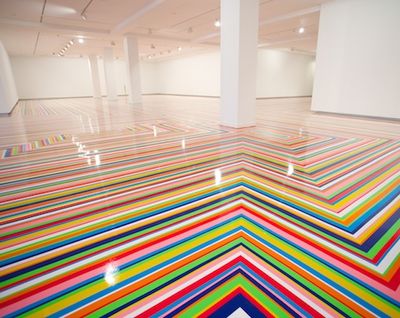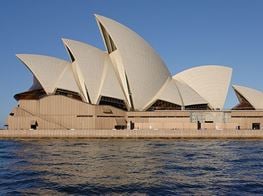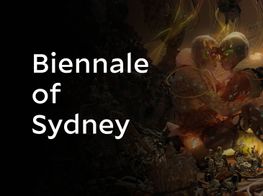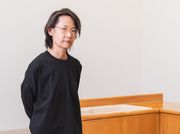The Right Speed: The 2014 Biennale Of Sydney

The 19th Biennale of Sydney, curated by Juliana Engberg, opened this week under the title You Imagine What You Desire. At times, it succeeds in being both intelligent and accessible, something that is difficult for an art event of this scale. However, ‘Show, don't tell’ is a technique that would give many of the works in this Biennale the credit they deserve, separate from the curator’s lofty exposition.
Engberg’s biennale casts artists as contemporary philosophers who offer alternative visions of the world through an aesthetic tradition. Installations such as Gerda Steiner & Jörg Lenzlinger’s Bush Power, 2014, at Cockatoo Island, typify the difficulty of this artist-as-philosopher pitch. The Swiss collaborators propose we use the energy generated by exercise to power the planet, demonstrating this novel idea through a kitsch installation of gym equipment covered in artificial flowers, human skeletons and cute but ultimately uninspiring kinetics. Tinka Pitoors’ baroque installation Dysideological Principle, 2013-14, at Carriageworks is a similarly superficial mixed media installation disguised as a something new.
Mikala Dwyer’s installation The Hollows, 2014, is a welcome reprieve from the colourful and junky installations peppered through the Biennale’s venues. Dwyer heats transparent acrylic material giving the effect of sculpted light and, like objects of worship, the installation of these lovely forms changes the industrial architecture of one of the island’s empty naval buildings into a place of quiet devotion. In the island’s vast turbine hall, Norweigan artist Tori Wrånes’ performance Stone and Singer, 2014, is one of many works in the Biennale that touch upon the curatorial premise without the need to be supported by it. While a huge stone pendulum swings just above her head, Wrånes performs a spectacular song of lament. With the help of rat-like prosthetic makeup, a brass band and a tail that acts as a microphone, Wrånes transforms herself into a mythic creature inspired by Norse mythology.
At The MCA, sculptures, installations and videos explore the shifting perceptions of light and colour across three floors of the museum. The works are a balance between fun and intellect, and Engberg manages to preserve the atmosphere of each work throughout her curation at this venue. In David Claerbout’s The Quiet Shore, 2011, black and white photographic slides of the Brittany coast, with its bathers and stilled ocean, slowly loop across the screen. The polished reflective floor heightens the filmic slideshow, as if it were being projected on the surface of the sea itself. Scottish artist Jim Lambie has covered an entire galley floor with one of his Zobop installations of multicoloured vinyl tape, creating a dizzying spectacle in the white void of the gallery. Additional small installations throughout the room such as a hanging thread of cheap sunglasses and business shoes add humour and substance, taking the colourful installation beyond the merely spectacular.
But if it’s spectacular you want and if you have ever wondered what it is like inside a lava lamp then take your time lying on the floor of Mercy Garden Retour Skin, 2014, a large scale multiple channel video work by Pipilotti Rist installed on the ground floor of The MCA. Rist’s 90s aesthetic has not changed in the new millennium, nor has her mad interpretation of the body and nature: to rhythms of an inoffensive soundtrack a huge shriveled penis swings in an ocean current, sunsets melt into foaming waves, while fingers trace the length of a barbed wire fence. Emily Roysdon’s Our Short Century, 2014, is a quieter work that uses music, photographs, screen prints and video to consider the effect of time and space on the 21st century body. This engaging and dynamic installation changes pace, and proves its point, when you listen to its soundtrack; a collaborative track written with Swedish band The Knife.
At The Art Gallery of New South Wales, the curator strikes again with the work of Nathan Coley. Coley’s illuminated text on scaffolding, over several venues, literally spells out the theme of the Biennale, and it begins to feel a little like the curator has taken out advertising space. And at the entrance to main gallery, a quote from Edward Said, attributed to Anonymous, spells out the vibe at this Biennale venue: Modern Western culture is in large part the work of exiles, émigrés, refugees. The works here have a decidedly political angle, from the body and the environment to notions of race and gender. However they generally lack both the cohesion and challenging discord you would expect from such an introduction. Notable exceptions are Rosa Barba’s film installation, Time as Perspective, 2012, that shows Texan pump jacks, like parasitic metronomes, extracting oil from the earth. There is something particularly American and above all fascinating about watching the bobbing heads of these pumps in the landscape. The film’s projector is deliberately visible in the space of the gallery and watching the reel run at speed heightens the sense of our finite time and resources.
In Michael Cook’s photographic series Majority Rule, commissioned for the Biennale, an Aboriginal man is photographed occupying and reclaiming historically ‘white’ sites such as Parliament house. Shot on location, each portrait was then carefully layered together to create the illusion of an indigenous everyman that poses an alternative to the Australian cultural landscape. The tricky and laborious photographic process that Cook employs speaks of a yearning for Aboriginal sovereignty and the sense of displacement felt from being black in a white world.
This year is the first time Carriageworks has partnered with the Biennale and the venue is largely dedicated to screen works and video installations. Standout works include Dutch artists Broersen & Lukács’ Mastering Bambi, 2010, in which all the animals from the Disney classic have been removed, leaving nature as the only protagonist. The digital erasure of Bambi and her forest friends has a ghostly and disjointed effect on the animated Disney footage, and the soundtrack, re-mastered from the original score, only adds to the sense of menace and destitution. Broersen & Lukács are often influenced by the sublime in their work and this video is a terrifying interpretation, influenced by this aesthetic and philosophical tradition.
In a purpose built theatre inside Carriageworks, long form experimental or documentary-style works are being screened for the duration of the Biennale. Joost Condon’s documentary short follows the lives of seven Dutch children whose families have converted to Islam. Without adult supervision we watch the children over the course of a year as they run wild throughout their encampment on the outskirts of Amsterdam, dressing up, cooking and eating a maggot stew and play-act the daily rituals of their absent parents. Ann-Sofi Sidén and composer Jonathan Bepler’s Curtain Callers, 2011, is an incredible screen work in which time and space are compressed to demonstrate the real and invented time of the theatre. Shot over one year at Stockholm’s Royal Dramatic Theatre, this is a classic that uses the video medium to perfection. With so much expanded cinema and video work in the Biennale it is difficult to move quickly though its venues, however Engberg has chosen a technically and thematically diverse program of cinema and video installation that is worth slowing down for.
Japanese artist Taca Sui’s photographs were not on show when I finished my whistle stop Biennale tour at Artspace in Woolloomooloo; they were in the hands of Australian customs officials who were spraying the frames before releasing them for exhibition. In their place was Juliana Engberg’s copy of Sui’s monograph around which a crowd gathered. As a fellow audience member turned each page of this fastidiously printed book, he asked me if he was turning the pages slowly enough. ‘Just the right speed,’ I replied, happy, finally, to be led by the hand.












































































































































































